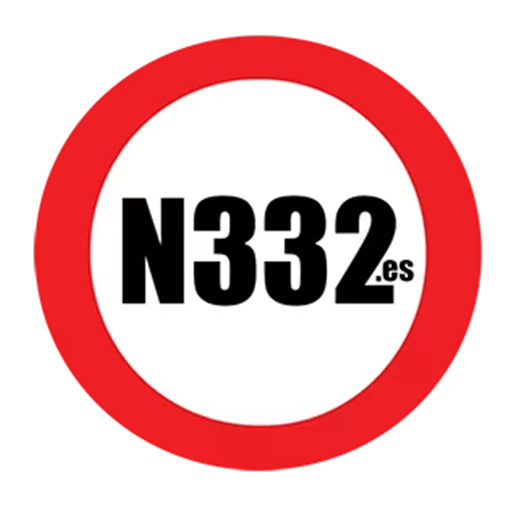Overtaking is one of the most common, yet potentially dangerous, manoeuvres on the road. In Spain, the Directorate-General for Traffic (DGT) places significant emphasis on clear regulations and signage to mitigate risks. Understanding the nuances of no-overtaking signs, where they apply, and the penalties for ignoring them is crucial for every driver. After all, many serious road incidents are directly linked to improper overtaking.
Contents
Deciphering No-Overtaking Signs
No-overtaking signs serve as vital warnings, indicating areas where passing poses a high risk. Visually, they are represented by a circular sign with a red border, featuring two cars – typically one black and one red on the left. The red car clearly signifies that overtaking other vehicles is prohibited.
These signs are strategically placed in particularly hazardous locations, such as zones with limited visibility, stretches of heavy traffic, or areas where an overtaking manoeuvre could compromise the safety of all road users.
At the end of a no-overtaking section, a similar sign will appear, but this time almost whited out, with diagonal black stripes.
The section between both signs will have a solid white line, or lines, in the centre of the road.



Where Overtaking is Never Permitted (Even Without a Sign)
Beyond explicit signage, the General Traffic Regulations in Spain prohibit overtaking in several common scenarios, regardless of whether a sign is present:
Curves and Changes in Gradient: Reduced visibility in these areas makes it impossible to safely assess oncoming traffic. Therefore, overtaking on sharp curves and significant changes in gradient is strictly prohibited.
Junctions and Roundabouts: These are conflict points where vehicles are changing direction or merging. Overtaking is generally forbidden here, with the sole exception being if signs explicitly indicate priority, making a safe manoeuvre possible.
Level Crossings, Tunnels, and Underpasses: Due to the risk of encroaching into the opposite direction of travel, passing is not permitted at level crossings, single-lane tunnels, or underpasses. The only exception is when there are multiple lanes available in each direction. It’s particularly important to remember that overtaking is never allowed at a level crossing with barriers.
Proximity to Pedestrian Crossings: Overtaking near a pedestrian crossing can dangerously obscure a pedestrian’s vision and lead to collisions. Extreme caution and respect for pedestrian priority are always required.
Behind Large Vehicles: You cannot overtake a lorry or a bus that is already in the process of overtaking another vehicle. Their sheer size limits your visibility and makes it difficult for other drivers to react safely.
Overtaking Cyclists and Slow-Moving Vehicles
While general no-overtaking signs prohibit passing most vehicles, they do not prevent you from overtaking cyclists, mopeds, pedestrians, animal-drawn vehicles, or cranes, provided specific safety conditions are met:
- Maintain a distance of at least 1.5 metres. This lateral separation is a legal requirement and crucial for the safety of vulnerable road users.
- Do not endanger other road users, including those travelling in the opposite direction.
- Reduce your speed appropriately before and during the manoeuvre.
Remember, when overtaking cyclists, always ensure that a minimum distance of 1.5 metres is left.
When Overtaking on the Right is Permitted
While overtaking is predominantly a left-hand manoeuvre, there are specific situations in Spain where overtaking on the right is allowed:
- If the vehicle in front is indicating a left turn.
- On urban roads with multiple lanes travelling in the same direction.
- On roads where trams run in the centre, and you are travelling in a lane to the right of the tram.
- When there is heavy traffic and the lanes are moving at different speeds, effectively forming distinct queues. If the right-hand lane is moving faster in slow-moving traffic on a motorway, you are permitted to overtake on the right without breaking the law.
Driving Behaviour on Motorways
On Spanish motorways, the general rule is to drive in the right-hand lane, reserving the centre or left lanes exclusively for overtaking. It’s a common observation in Spain to see vehicles unnecessarily occupying the centre lane, which can impede traffic flow.
Penalties for Non-Compliance
Ignoring a no-overtaking sign is considered a serious offence in Spain. Penalties typically include fines of up to 200 euro and the loss of points on your driving licence. These measures are designed to underscore the gravity of the rules and encourage compliance to prevent accidents.
Recommendations for Safe Overtaking
Before initiating any overtaking manoeuvre, always:
- Ensure visibility is adequate and that there are no signs prohibiting the action.
- Use your turn signals well in advance to clearly indicate your intentions.
- Maintain an appropriate speed throughout the manoeuvre.
- Return to your original lane smoothly once safely past the other vehicle.
If you are ever unsure whether it is safe to overtake, the best course of action is always to wait. Caution and careful planning are key to avoiding risks.
Respect the Signs, Protect Lives
No-overtaking signs are not arbitrary; they are placed at critical points where the risk of collision is significantly elevated. Knowing what they mean, understanding the specific exceptions, and consistently complying with these rules can genuinely make the difference between a safe journey and an avoidable accident. If the situation isn’t entirely clear, simply don’t go ahead. Waiting a few seconds could very well save your life – and the lives of others.
Discover more from N332.es - Driving In Spain
Subscribe to get the latest posts sent to your email.

You must be logged in to post a comment.